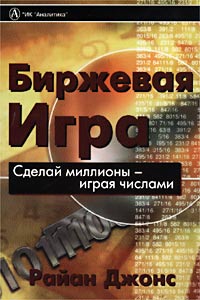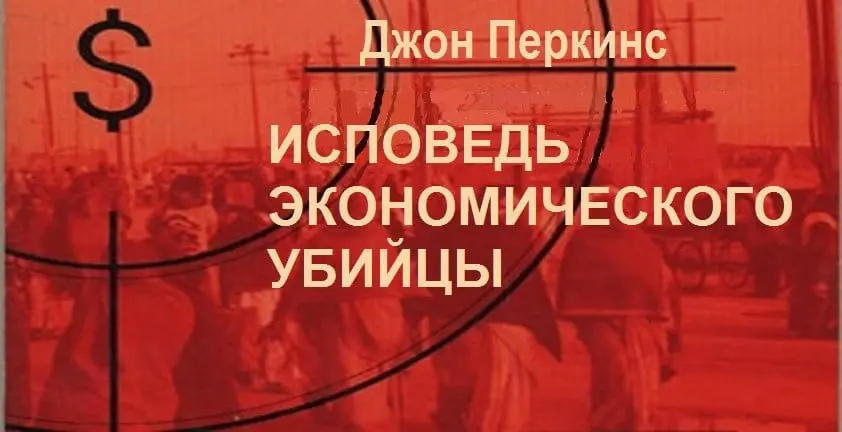 The one that struck me the most in Ryan Jones's book – this is his approach to trading strategies of a stock player. It practically abstracts from any trading methods and systems., of which there are a great many today, and approaches the market as a system of transactions with equal chances. No matter how, for what reasons, with which decision-making system do you make this or that transaction, – all this plays absolutely no role.
The one that struck me the most in Ryan Jones's book – this is his approach to trading strategies of a stock player. It practically abstracts from any trading methods and systems., of which there are a great many today, and approaches the market as a system of transactions with equal chances. No matter how, for what reasons, with which decision-making system do you make this or that transaction, – all this plays absolutely no role.
Undoubtedly, what is most important in the investment process is the result obtained. Most strive for this goal through the creation of complex trading systems., or employs a huge number of indicators, or works with arrays of information of a fundamental nature, maybe – just diversifies its portfolios. But Ryan Jones doesn't take any of these approaches., or uses them very little, – he operates only with a combination of positive and negative outcomes. Numbers only, and the results are stunning, and there is no doubt, that many of those, who will read this book, will be shocked and reconsider their views on stock trading. This is not surprising., because this book – about capital management, then, what is called “money management”, and this is – that third major aspect of trading, whose presence provides an investor or trader with strategic success, and his absence – leads to losses. The other two lie in a very different realm., many other books are devoted to them, which reveal the methods of analysis, ensuring the right choice of the market), and principles of investment diversification, which are also devoted to numerous publications on this topic.
And I must admit honestly – the approaches he demonstrates prove, it would seem that, at first glance unthinkable situation: how, having more losing trades as a result, rather than profitable, (even in the ratio 70/30) can, Nevertheless, get a positive result! Why is that? It's that simple: it is enough to pay attention to the discrepancy between logic and mathematics in the process of money management and the associated risks, as soon as the reasons become clear, why there are practically no unsuccessful trades, but there is only unskilled money management.
In this regard, I will allow myself a small digression and excursion into the world of banking technologies..
The multiplication of deposits is widely known. As soon as there is a positive difference between the interest rates for raising and placing capital, so the possibility of multi-stage arbitrage with profit winding immediately arises. Imagine a banker, who can take a loan from his bank in the amount of 3% per annum and place it in 7% securities, pledged by his own bank. Took 10 million dollars under 3% and purchased bonds. Put the bonds as collateral, received a new loan, etc., in a circle. Like in a fairy tale about a white bull… only this bull is able to gain weight from 20 to 40 % per annum on initial capital. The use of such technology in trading has the potential to bring huge profits..
For one trader, working in Forex with the full amount of the deposit, Leverage 50, without "stop-losses" and contrived “cut off” on a good day 100-150 points, once I calculated a simple table, emanating from 10 profitable points per day, also for the full amount of the deposit. How do you think, what is the increase in the deposit in terms of annual interest ? Eleven thousand per annum! He felt bad. For two days he held his head and double-checked the data, and then even tried to rebuild my trading strategies.
I think, what a book for an attentive reader, which he already, undoubtedly, holds in hands, will make an even stronger impression. After reading it, you will no longer be able to work in the market like this, like before, whoever you are: as an individual trader with a small deposit or a portfolio investor, using a wide range of market instruments. Geometric Trade Growth Opportunities (or investment) bills are really stunning. And not only because of the animation effect, but also due to the choice of the optimal ratio of the amount of capital, number of traded contracts and step, progression, how to build up deals, and their reduction during the period of being in a losing streak.
But that's not all.. Perceiving the understanding of the optimal rate, ie. the ratio between the value of open positions and capital in general, you will find more than a discouraging effect for the uninitiated: phenomenon, consisting in the difference in profits by thousands of percent in the same series of transactions, in direct proportion to “optimality” the size of your position. And I must say, what kind of art (position size management or otherwise, Budgeting) recognized as an aerobatics in risk management when using capital management practices! From here, you immediately, the hopelessness of the state of the aforementioned trader will become clear, Working “by intuition” and always risking everything he has.
I will not retell all ideas and methods., set out in the book. I will only draw the reader's attention to the methodology for applying the methods of technical analysis to the problem of managing the size of trading capital, first proposed by the author.. Capital moving average and capital trend line, in the author's reasoning, are used in ways, which are very close to the principles of analyzing price series using price moving averages already familiar to many, i hope, will not confuse the reader's perception.
Outcome of the study Books, without a doubt, deeper understanding, both the compatibility of markets and the choice of strategies depending on the amount of capital, diversification latitude ratios (consider, is a fact of the existence of anti-diversification – this is when the expansion of diversification does not lead to the desired result) and existing risks, as well as accounting for other, aspects of exchange trading often overlooked by us. Maybe, that you even have to revise and rebuild your decision-making system, associated with entering and exiting the market, and also rethink your approaches to assessing profitability, etc., in any case, your view of market trading will become more voluminous, wider and more realistic.


